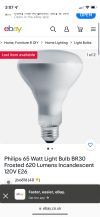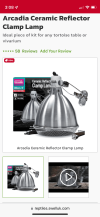This is a husbandry issue and there is nothing a vet will do but make it worse.Can anyone advise whats the best thing to take him to the vets in please? Am
Worried about him not having heat for some time
You've got your heating and lighting info all mixed up. Strip lights are fine, but what kind are you using? Is it an Arcadia 12% HO in a reflector hood, or a T8 10.0? Do you have a Solarmeter 6.5 to check UV levels? The strip light doesn't provide any basking heat, and that is likely why your tortoises eyes are closed up.
MVBs will cause pyramiding, and their UV output runs the spectrum from way too much to none at all. They shouldn't be used. They do give off heat, but you can't use your heat lamp with a thermostat and have the "sun" turning on and off all day. Thermostats are for ambient heating devices, not your basking lamp. The basking lamp needs to be set on a timer, and the temperature controlled by adjusting the height, or the bulb wattage, or by using a rheostat to dial it in. You need a flood type bulb for this. Arcadia makes them.
There are four elements to heating and lighting:
- Basking bulb. I use 65 watt incandescent floods from the hardware store. Some people will need bigger, or smaller wattage bulbs. Let your thermometer be your guide. I run them on a timer for about 12 hours and adjust the height to get the correct basking temp under them. I also like to use a flat rock of some sort directly under the bulb. You need to check the temp with a thermometer directly under the bulb and get it to around 95-100F (36-37C).
- Ambient heat maintenance. I use ceramic heating elements or radiant heat panels set on thermostats to maintain ambient above 80 degrees day and night for tropical species. In most cases you'd only need day heat for a temperate species like Testudo or DT, as long as your house stays above 60F (15-16C) at night. Some people in colder climates or with larger enclosures will need multiple CHEs or RHPs to spread out enough heat.
- Ambient light. I use LEDs for this purpose. Something in the 5000-6500K color range will look the best. Most bulbs at the store are in the 2500K range and they look yellowish. Strip or screw-in LED bulb types are both fine.
- UV. If you can get your tortoise outside for an hour 2 or 3 times a week, you won't need indoor UV. In colder climates, get one of the newer HO type fluorescent tubes. Which type will depend on mounting height. 5.0 bulbs make almost no UV. I like the 12% HO bulbs from Arcadia. You need a meter to check this: https://www.solarmeter.com/model65.html A good UV bulb only needs to run for 2-3 hours mid day. You need the basking bulb and the ambient lighting to be on at least 12 hours a day.
Most of the care info you find on the internet is going to be wrong. 40-50% humidity is fine for a grown adult, but too low for a growing baby. And higher humidity does NOT cause skin or breathing problems, or all of the 1000s of babies I've produced over the years would all be dead. That is typical wrong info and from a vet site no less.
If you want this baby to survive, read the care sheet that Lyn posted in post number 31 and follow it. A trip to the vet is likely to make things worse because vets don't know tortoise care. They will likely misdiagnose the problem, make a futile attempt to treat the symptoms, and never address or correct the CAUSE of the problem.

